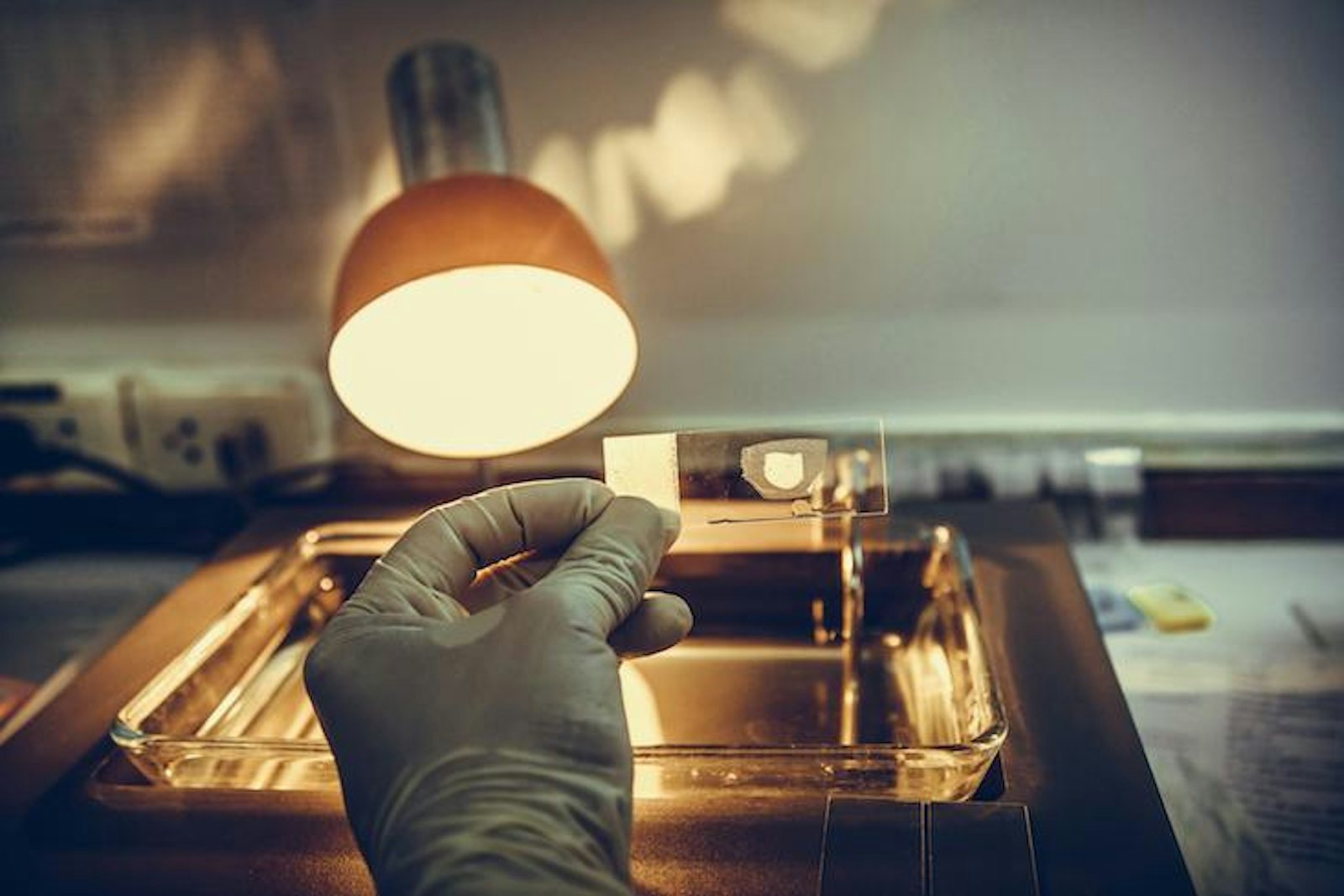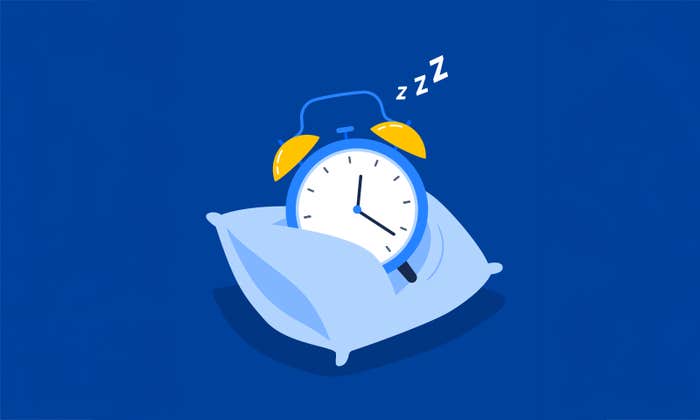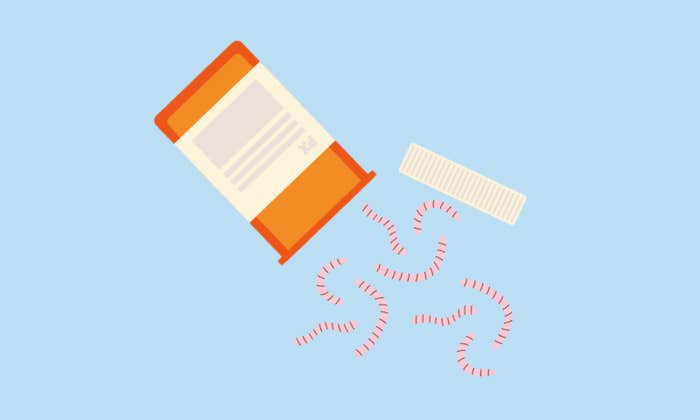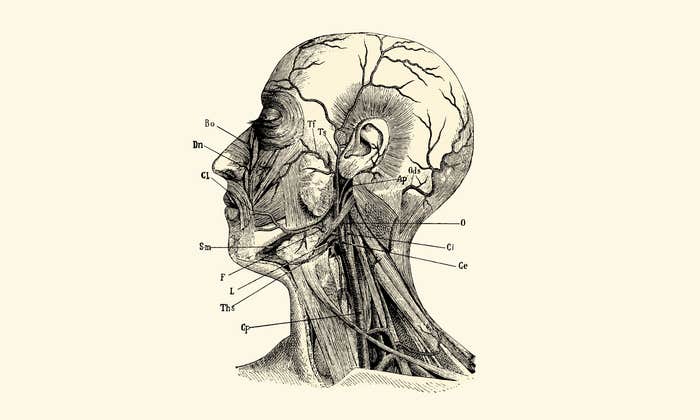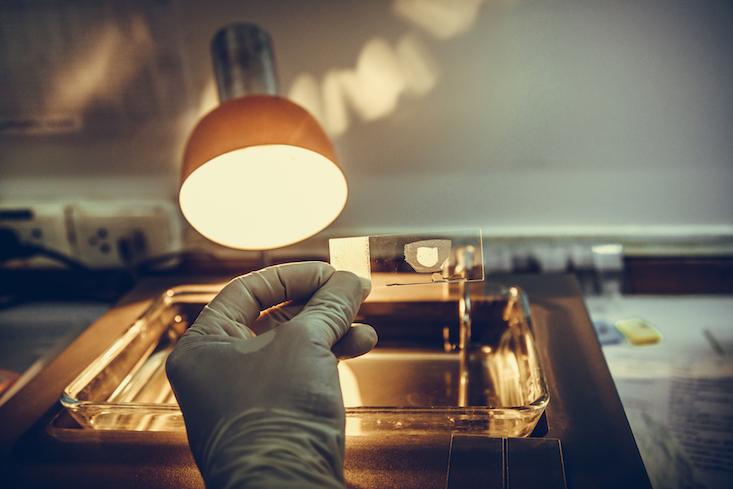
Although I have lived the majority of my life in New Jersey, Utah has always felt like home. Three of my grandparents were multigenerational Utahns, of pioneer stock, and the other grandparent grew up in nearby Idaho. Our family disrupted this pattern when my father pursued a position as a materials science professor that eventually led him to Rutgers University. I had only two sisters, but our extended family, like most Mormon families, is substantial. I have 32 first cousins, and my wife (also from Idaho) has more than 50. Being the only oncologist our family knows, I have become aware of most relatives, relatives of relatives, or friends of relatives with cancer. Although I practice on the East Coast, I have a large virtual consulting service as a result of this extensive Utah and Idaho network. A random call or text message from a relative almost invariably means somebody they know has cancer.
One such text was received last summer on a sweltering night in Alexandria, Virginia, where I now live. The text message was from a relative in Utah who asked, “any chance that somebody treating a melanoma with herbs will be OK”? I thought back to a patient I had just seen in my practice during the month before this text message. An educated man, an engineer at a military base, had used a recipe he found on the Internet to treat a melanoma on his left shoulder. He called the application a “slurry,” and said that it contained multiple herbs and also included eggplant and a flower called bloodroot. Applying this slurry induced a large scar on his left shoulder. More than one year later, he came to my office because of a 4-cm lymph node in his left axilla. A positron emission tomography scan revealed lung metastases.
I was stunned by her reply that there had been no biopsy.
Utah is known as the epicenter of the natural supplement industry. It is, by some reports, the second biggest industry in the state. Many of these products are sold by multilevel marketing companies. Although these companies must, by law, tell you that there is no evidence of efficacy in cancer, much of the marketing is performed by their vast network of sales people. Many of these sales people are ostensibly customers who dabble in sales, with the goal of sharing these supplements, vitamins, or essential oils with friends and perhaps making a buck or two along the way. Although the executives of these pyramid-structured companies, perched in their offices with views of the Wasatch Mountains, are undoubtedly compliant with the law, many patients report that the downstream salespeople will often share testimonials of efficacy in cancer. The appeal of supplements for cancer treatment is by no means limited to the mountain states, but it seems to be especially common within my relatives’ social network.
I made a call to this Utah relative, who told me what he knew of the situation. It was his sister-in-law, whom I will call Katie for the purpose of the story, who had developed a nodular melanoma on her face. She was treating it topically and orally with a combination of herbs and had reported significant shrinkage. My relative explained that Katie had expressed some ambivalence toward the medical community and that she and her husband had sent a group e-mail to relatives to let them know that imploring them to see “a real doctor” would not be productive. Nonetheless, considering the perilous sounding melanoma, and my recent experience with the engineer, I resolved to insert myself into their situation.
That night I wrote an e-mail, quite heartfelt, pleading them to reconsider. I pursued a more deferential approach, given that they sounded distrustful of physicians. Without being too forceful, I noted the gaps in my knowledge about herbal treatment but asked them to deeply consider the serious nature of the situation. Would they be amenable to being evaluated by both an herbalist and a dermatologist? They replied to my e-mail and wished to initiate a dialogue. For a better evaluation, they proposed a video call so that I could see the lesion.
Our conversation took place with Katie and her husband Eric sitting on the couch in their living room. It was after 10:00 p.m. EST, and they had just put their daughter to bed. I had assumed they were relatively young but did not anticipate that they would appear to be not much beyond college age. They were attractive people, and the image on my smartphone screen resembled a photo from a clothing catalog.
After an exchanged of niceties, they zoomed in on the lesion. The epicenter of the lesion was on her right forehead, just superior and lateral to her right eye. It was maroon with patchy discoloration and seemed to be at least 4 cm in diameter. It was contiguous with a faint area of lighter red on the right cheek. At first glance, I could have mistaken it for a port-wine stain birthmark, but the lighting was suboptimal and she reported that the lesion had appeared suddenly within the past four months. Zooming in on the area at the center of the lesion, there seemed to be healing of a blister and a small raised area.
I asked her if she could read me the biopsy report. I was stunned by her reply that there had been no biopsy. I saw her bracing for the next quite obvious question. When I asked her how she knew this was a melanoma, she said, “I know that you don’t believe in this kind of stuff, but I know it really works. I was diagnosed with a biomeridian machine.”
Given that I had never heard of a biomeridian machine, I could not articulate an opinion. Katie described going to a wellness clinic in Utah. She was concerned about the spreading rash on her face and received input from a naturopathic clinician. He said the lesion appeared to be a nodular melanoma. She proceeded to have a biomeridian test, with a stylus placed on multiple acupuncture points, measuring bioimpedance in various tissues. According to this practitioner, nodular melanoma was confirmed after the test. He then spoke to her about a natural cure and showed her past patients’ testimonials that were hanging on the walls of the clinic. She bought a combination of more than five different herbs. She declined to tell me how much these herbs cost. She had been applying these herbs for the past six weeks and was pleased to report to me that the size of the lesion had decreased by at least 50 percent.
From my initial conversation with her brother-in-law, I was aware that her cancer had become somewhat of a family crisis. We are a religious family, and we often pray and fast (go without food or drink for 24 hours) in an effort to act on behalf of someone who is suffering. It is typical to give a donation to the needy during these times, not necessarily directed toward the person we are fasting for, that is roughly equivalent to the money we saved on food and drink. This is one way to act in solidarity with somebody who is facing an ominous challenge and to provide extra depth to our prayers on their behalf. I assumed that family and friends were doing this on Katie’s behalf, but now I was wondering if she had cancer at all.
Quite delicately, I asked her to consider pursuing a biopsy. She explained to me that she and her husband were uninsured and were not likely get insurance soon. Anyway, they said, they had had bad experiences with physicians. Speaking in an extraordinarily cautious and polite manner to the point of being almost disingenuous had gotten me this far, so I decided to continue to proceed along that line. I told her that I recommended a biopsy, but prefaced it by clarifying how little I knew about the biomeridian machine and these herbs. She then began to tell me about the test and explained that Western physicians do not study reflexology because they cannot make money from practicing it. Although I was slightly annoyed and was tempted to point out the irony in her statement, I remained steadfast with my humble approach. I told her that in medicine, two confirmatory tests are standard, that correct diagnosis is important, and that you can’t be too careful in making the diagnosis. They didn’t seem convinced, so I took a bolder approach. I looked into my smartphone with a new intensity and said, “You need a biopsy. I don’t know much about the biomeridian machine, but I doubt it can diagnose melanoma reliably.” This was my most direct statement of the day, and it seemed to have an impact. I said I would find a physician willing to do a biopsy and would help them make an appointment. They agreed, even telling me that I seemed much more open-minded, in their opinion, than the average physician.
Given that I had never heard of a biomeridian machine, I could not articulate an opinion.
I called a dermatologist at the University of Utah the next day. I explained the situation, including their insurance quandary, and gave a short description of the rash. From his reaction to the story of the biomeridian machine, I sensed that this was familiar territory for him. He kindly agreed to see them later that week.
I never got a firsthand account of the visit. Although I called Katie and Eric to follow up one week later, they never returned my call. Katie’s brother-in-law reported to me what he knew. He said that they did go to the appointment. The physician told them that the lesion was not melanoma and was clearly an allergic reaction, perhaps related to some herbs she had been taking earlier. He said a biopsy was not needed, and he was certain there was no melanoma. Katie found the physician to be unduly direct and pompous. She maintained that she had melanoma, despite his assessment. As of the last update from her brother-in-law, the lesion on her face continues to decrease in size.
It is somewhat maddening to think that her name and testimonial, declaring her success with herbs, will be added to the walls of the wellness clinic in Utah. Hopefully, no unfortunate soul with cancer will base their treatment decision on her purported cure. However, I do find solace in two things: First, she is probably going to be just fine in the long run. Second, I was able to guide her toward a dermatologist. Maybe I had found the right formula: a prolonged effort to build a relationship of trust, followed by a simple bold statement at the appropriate time.
Alan Levinovitz, an author interested in the mythical beliefs associated with diet, recently said in an interview with The Atlantic, that asking someone to reconsider a dietary rule is like asking them to “give up their faith.” Similarly, a patient’s beliefs about alternative medicine (or natural treatments) is often a fundamental part of their identity, just as Western medicine and the scientific method are a part of mine. Systemic cancer treatment or surgery may represent more to people than simply a treatment for their disease. It may be symbolic of a social or political culture that they feel contradicts their most deeply held views. I did not discuss world views or politics with Katie and Eric, but I understand them to be skeptical of global warming and scientific opinion in general. Others who are drawn to alternative medicine may be at the other end of the political/social spectrum and may prefer natural treatments to those produced by pharmaceutical companies because of their distrust of corporations.
The common denominator between these diverse groups of people is distrust. When I first started my career as an oncologist, I had the illusion that speaking to a patient for 10 or 20 minutes about the scientific method and clinical trials would help patients with cancer conform to my beliefs and my treatment plan. The futility of this approach is now obvious to me. Beliefs about medicine are personal and are dearly held. They are not easily changed during a doctor’s appointment. I now have less of a desire to change hearts; I would rather focus on the individual in front of me, using what we have in common to build bridges of trust.
Experiencing this with Katie, who is practically family, felt much different than an interaction with a patient with whom I have no family ties. If such a patient presented views similar to Katie’s during an office appointment in the past, I may have quickly dismissed them, considering the views irrational and the patient unlikely to follow my advice. I found success when I was not concerned about changing Katie’s beliefs about herbs or Western medicine. Instead my focus was on the goal of obtaining a biopsy.
With Katie, our family ties allowed me to more easily find commonality and establish trust. Similar patients who followed after Katie, those who carry an affinity for products marketed as natural and who harbor a distrust of physicians, I now view through a different lens. I recognize that we probably have more in common than meets the eye. Although they may harbor deep beliefs about medicine that are not easily changed, they did see a doctor, and there was a chance for that doctor to have an impact. Perhaps a patient, listening ear, followed by kind and pointed advice can make the difference between life and death.
Timothy L. Cannon is an associate professor of internal medicine at Virginia Commonwealth University.















